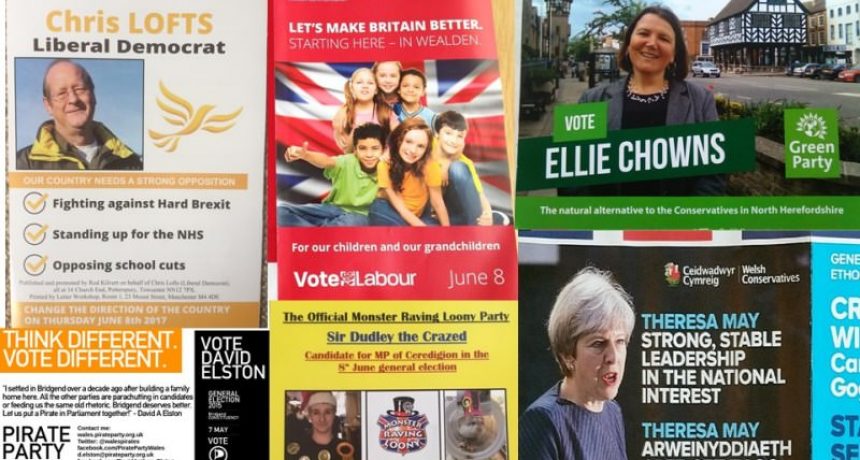Will your vote be swayed by the power of print?

Leaflets, posters, letters, stickers, signs…
There are a lot of them about at the moment! In an age when digital marketing sometimes seems to be taking over, there is nothing like a General Election to really show the role print can play in influencing an important, complicated decision.
Print publicity plays a crucial role for Political Parties for a variety of reasons. Only about 2/3 of people turn up and vote and that varies a lot by age, with older people far more likely to vote than the younger generation. Retired people are less exposed to digital messages than millennials, so printed communications make sense when you want to reach everyone.
Even for younger voters, the messages involved with political campaigning are often complicated to understand and take time to absorb. Print provides the perfect medium for a message that takes a little bit of explaining. Rather than being swiftly deleted like an email, or flashing past on a screen, leaflets have a habit of lying around for at least a few days, giving people time to read and think about the messages.
Print also helps supply an important local angle to a national campaign. Whilst nation-wide party communications are winging their way into our letterboxes, you have no doubt also received flyers and letters from your local candidates. The very act of delivering the leaflet, particularly in a deeply rural area, can help a political party.
A local Liberal Democrat candidate for the recent Council elections told us:
“We are still frequently told ‘the only people who come down here are the postie and the Liberal Democrats’. How could we ignore that? David Penhaligon (Liberal MP for Truro 1974 until his death in 1986) was well known in the party for his tactic of “if you’ve got something to say, put it on a leaflet and stick it through the letterbox” – this clearly still applies.”
A local campaigner for the Labour Party had a similar view:
“I still feel there’s a definite benefit to printed material. It can lead to informal and friendly chats with householders when I’m out and about delivering. They can be a useful primer before door to door canvassing, as a less intrusive introduction to a candidate. Leaflets also provide voters with a physical reminder of the election, and psychologically it lets them know, possibly unconsciously, that their candidate wants their vote and has made efforts to reach out to them.”
The Conservative Party have been particularly enthusiastic with their leafleting this year. Residents in one street in Cambridge were woken by leaflets falling through their letterbox at 1 am one night. A local campaign officer apologised for interrupting the constituents’ nights sleep but also said:
“I am now all the more appreciative of the hard-work that my team are giving during this all-important election campaign. Their efforts underline just how serious Theresa May and the Conservatives are that every vote really does count in this election and every voter matters. The late-night efforts of my team also reflect just how much is at stake.” (Cambridge News)
To view a full selection of leaflets, from the Pirate Party and the Monster Raving Loonies to the major players, and upload your own samples of election publicity visit www.electionleaflets.org. On Twitter, check out #electionleaflets and add yours to the collection. A quick scan through is quite a lesson in how, and how not, to approach graphic design.
As always with print, making sure you have proof read your copy, know where it’s being printed and have ensured your campaign is being printed on FSC® certified paper should be a given. Especially with a last-minute election like this one, campaigns are not without their slip ups. Early in the process, the Labour Party allegedly had to pulp some leaflets as they included the wrong polling date. In 2010, UKIP were caught out for having “Believe in Britain” flyers printed in Germany, and the less said about where the fold landed on Conservative Candidate Matthew Hancock’s election leaflets the better!
Wherever you decide to put your cross on June 8, somewhere along the line, someone will have tried to influence your decision through the power of ink on paper. Online channels also play a significant role. British Political Parties spent over £1.3m on Facebook advertising leading up to the general election in 2015 and are expected to exceed that this time around, but for a complex message and a decision that takes a bit of time – all the parties understand that you really can’t beat the power of print.